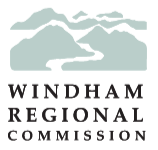Educational, Cultural, and Recreational Resources
education and library resources
Early Education and Child Care
The availability of high-quality child care is a concern for many parents, employers, and communities. Affordable, high-quality child care is essential in developing a full employment economy, raising income levels, and lowering the need for public assistance. High-quality child care also has many positive benefits for a child’s social development and preparation for elementary school.
According to a study entitled “Stalled at the Start: Vermont’s Child Care Challenge” completed by Let’s Grow Kids in 2022, the state has made improvements in increasing access to regulated early childhood education programs due to investments and programs over the last several years. However, there is still as significant unmet demand for Windham County families, in particular for programs that offer care for infants (6 weeks – 23 months). The primary barriers for families to accessing child care include location, hours, and ages served. The study notes that there is a particular need for programs that offer care for infant (6 weeks – 23 months) and for full-day and full-week programs that accommodate the needs of working families.
Several components need to be factored into locating additional or expanding existing child care facilities. Transportation concerns, including the rural nature of the road network and existing commuting patterns, location of employment centers, and population growth trends, all contribute to a unique environment for assessing specific child care facility location needs.
The Windham Child Care Association is a child care resource and referral agency of child care providers serving the Windham Region. Among other efforts, this association helps parents identify and locate quality child care that meets their needs, helps parents access the state child care financial assistance program, and builds partnerships with the business community and other community service agencies to support the needs of families and children. The organization manages a licensed child care center for children age 6 weeks to 5 years in Brattleboro and operates the Early Learning Express, the county’s bookmobile program.
Elementary and Secondary Education
There are five supervisory union districts serving towns in the Windham Region: Windham Central, Windham Northeast, Windham Southeast, Windham Southwest and Bennington Rutland (see the Educational Facilities Map). There are four public secondary schools in the region. Three are operated by union high school districts: Brattleboro Union High School District (Brattleboro), Bellows Falls Union High School District (Rockingham), and Leland and Gray Union High School District (Townshend). Wilmington and Whitingham formed the Twin Valley School District for the purpose of jointly providing secondary education for their towns. The Twin Valley High School is located in Whitingham. The region is also home to numerous independent elementary and secondary schools.
Following the adoption of Act 46 in 2015, the region has seen the consolidation of local schools with other districts which has had an impact on the governance and administrative structures of elementary and secondary schools. Many local school districts have merged in the region so that there are now school districts representing multiple towns while other school districts serve a single elementary school. School systems are governed by local school boards that provide oversight and policy guidance for school districts and supervisory districts. The supervisory unions boards are responsible for district-wide operations, such as central office administration, special education, and transportation. School boards govern operations for specific schools.
Some towns that do not have their own elementary school pay the tuition for resident children to attend nearby public or independent elementary schools. Towns which do not have their own high school, or which do not belong to a union high school district, pay tuition for high school age students to attend nearby public or independent high schools.
School enrollment figures fell in the region over the last ten years, although not as significantly as the previous ten years. Total enrollment in the region dropped by 7 percent from 5,774 in the 2013-2014 school year to 5,349 in the 2023-2024 school year. The consolidation of schools as well as aging facilities has still led to new school construction projects in the region. The location of schools has a large impact on the community where they are located. Building new schools away from existing villages, town centers, and surrounding neighborhoods can result in a loss of vitality in these centers and increases public expenditures and vehicle trips.
In 2021, the Vermont legislature passed Act 74 requiring schools built or renovated before 1980 to test indoor air for the presence of Polychlorinated biphenyls (PCBs). Schools that were built or renovated before 1980 are more likely to have PCBs in building materials, commonly in caulk and fluorescent light ballasts. The Department of Environmental Conservation has authority to require schools to make fixes if PCB levels are high. All testing must be completed by 2027. The legislature granted funding to test for PCBs, however there are not currently funds allocated for determining the source of PCBs or to make fixes to lower elevated levels.
Post-Secondary Education
Three public post-secondary schools in the region offer courses or programs. The Community College of Vermont in Brattleboro offers Associates Degrees and provides a wide range of courses and workshops. Vermont Technical College has a satellite campus in downtown Brattleboro that offers Associate Degrees, career-related certificates, and training programs. In July 2023, Vermont Technical College joined Castleton University and Northern Vermont University to become Vermont State University. Lastly, the University of Vermont operates a regional Extension office and continuing education center at the Winston Prouty campus in Brattleboro.
The region hosts the campuses for two independent colleges. Landmark College in Putney offers programs designed to meet the needs of students with learning disabilities. The School for International Training has a low-residency campus in Brattleboro and offers undergraduate study abroad programs and graduate programs. Marlboro College in Marlboro was a small independent liberal arts college that closed in 2020.
Adult Education
There are several opportunities for adult education in the region. In addition to the various programs offered through community libraries and individual groups, the Community College of Vermont has a learning center in Brattleboro that offers associate degrees, career-related certificates, and credit and non-credit training programs. Vermont Adult Learning, which has an office in Brattleboro, provides instruction in reading, writing, speaking, listening, math, reasoning and problem solving, occupational and workplace skills and information technology to adults 16 years and older who are not enrolled in secondary school. Finally, the University of Vermont offers online continuing education courses through its Professional and Continuing Education program. Adult education programs can be important for helping out-of-work individuals re-enter the workforce. These programs are also beneficial to adults looking to change career paths.
An additional piece of adult education is pairing training programs with businesses in the region so that workforce skills are being developed to meet the current and future needs of local businesses. The Brattleboro Development Credit Corporation (BDCC) has designed and implemented a number of workforce development programs through its Southern Vermont Workforce Center of Excellence that bring together private, public, and social sectors. BDCC has focused on job pathways in industries with high wages, demand, need, and opportunities.
Libraries
The region's libraries play an important role in serving the learning and information needs of its citizens, as well as providing community centers for meetings and cultural events. Story times, after school programs, book discussions, lectures and films, and internet access are common programs at many of the region’s libraries. Increasingly, libraries are taking on expanded roles as well, such as assisting residents with accessing social service needs.
PUTNEY LIBRARY SUMMER READING AND MEAL PROGRAM
 The Putney Library offers a Summer Meal program with free pre-packaged bagged lunches for those aged 18 and younger, five days a week during the summer months. The Library also hosts a Summer Reading Program with different weekly activities and events for families throughout the summer. The Summer Reading Program receives funding from the Vermont Department of Libraries, the Vermont Community Foundation, and the Children’s Literacy Foundation.
The Putney Library offers a Summer Meal program with free pre-packaged bagged lunches for those aged 18 and younger, five days a week during the summer months. The Library also hosts a Summer Reading Program with different weekly activities and events for families throughout the summer. The Summer Reading Program receives funding from the Vermont Department of Libraries, the Vermont Community Foundation, and the Children’s Literacy Foundation.
There are 21 public libraries in the Windham Region with seven towns not having any libraries within their borders. Brooks Memorial Library in Brattleboro and Rockingham Library are the region's largest libraries. Most libraries in the region are linked in an electronic network designed and supported by the Vermont Department of Libraries to bring the entire state's resources, state library holdings, college, university and public libraries, to citizens of the region.
Adequate funding is a struggle for libraries in the region. Federal and state funds do not pay for basic local public library services. Many towns in the region depend on volunteers to operate the town library. Collaborations between local libraries and educational institutions may aid in providing other avenues for support.
